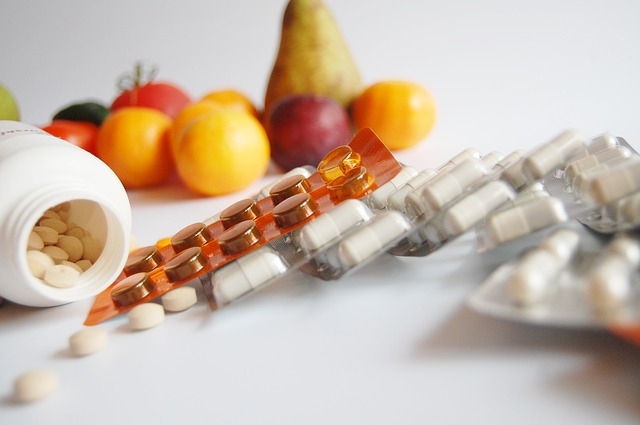Health and wellness. We hear the words all the time, from op-eds in newspapers to advice from a friendly doctor. We should all be prioritizing health and wellness, leading lives with prevention at the fore of medical treatment.
We should take our vitamins, so that’ll be $30 a month. Cod liver oil is good for our joints, so that’s another $10. Yoga to keep us supplement, another $40. Oh, and of course, we should only eat organic – meaning we literally have to swallow the up to 40% markup at the same time.

It’s a nice dream; endless money to spend, the quest for wellness at the forefront of our minds. It’s also nonsense. We live in an economy still shivering with aftershocks from a massive global crash. Living costs are rising, but wages aren’t going with them at anywhere near the same rate. When it comes to what you do with your money, your health insurance comes first. All the little things you can do to prevent you needing to use that insurance, well, they’re at the back of the queue.
So there’s your before picture; now for the makeover. No, we’re not going to drag you onto TV and promise you can make bleached eyebrows work (you can’t. No one can). It’s a makeover with regards to healthcare and your finances. It’s not quite so fun, but it’s also less likely to make you burst into tears muttering about how you look like an alien, so there’s an upside.
The Problem of Branded Products
Cost of Advil at Walgreens: $0.11 per tablet
Cost of ibuprofen at Walgreens: $.05 per tablet
Active ingredients in both: Ibuprofen
So… why are you buying Advil? The active ingredient is exactly the same, at the same strength, with the same efficacy. You’re paying more than double for nothing more than a brand. Tylenol doesn’t measure up much better ($0.11 per tablet vs. $0.7, same active ingredient, same strength). You might think “but this one says fast acting on it! I need fast!”. Fine; so drink a cup of coffee at the same time. It has the same impact, as that “fast acting” compound is usually just caffeine. And this way, you get to drink some lovely coffee too.
Oh, and while we’re at it, let’s talk about specialist medications. The ones that promise to particularly help period pain or joint pain. How they’re achieving that is… they’re not achieving that, it’s not how painkillers work. Some countries have even outlawed this. Try taking a period pain reliever the next time you have a headache and you’ll see it for yourself. Of course, the “specialist” medications cost more, hence why it’s such a popular branding tactic. And that’s all it is: a branding tactic. There’s no medical necessity to it whatsoever.
The same applies for prescription medication. Your doctor may prescribe a brand name medication. Look that up and see if there is a generic alternative with the same active ingredients. And when you have the Rx for the generic version, a little shopping around can help you find discounts on prescriptions too.
Exercise For Free

Sweating in front of a YouTube video doing yoga in your sweatpants is not glamorous. You’re not rocking gorgeous gym wear, and you can’t admire your hair swishing in the mirror. But it is – internet and power costs aside – free. For truly free, going outdoors to run or stretch can bring your amount spent down to $0.
A lot of people sign up for a gym membership as they think it will compel them to use it. This rarely works. If you don’t already go to the gym, there’s probably a reason for it. You’re time poor; you don’t have the motivation. So that’s what you need to fix. Get into the habit at home, and only when it’s established should you approach a gym.
If you feel like you need some specialist help – such as being a total beginner – then, by all means, join a class and get that help. However, to keep an eye on costs, have an end goal of going it alone when you have nailed the basics.
Take Your Vitamins?

Many a WWF wrestler from the 80s liked to tell kids they should take their vitamins. It’s so ingrained on the national subconscious that it seems almost strange if you don’t have a few bottles.
Should you be, though? Most of us assume that there is no harm in vitamins. In fact, we expect the opposite. They’re going to make our lives better, make us feel healthier and active for longer.
While some of that is true, it’s important to stress moderation. Most over-the-counter vitamins do not contain doses that would be seen as being in moderation. They can contain over 300% of the recommended daily allowance. And when you take too much of a vitamin, it can increase – not decrease – your risk of cancer. Vitamin E at high doses has been shown to increase the risk of colorectal cancer. Beta carotene can increase the risk of heart disease and lung cancer by up to a staggering 20%.
Then there are the caking agents to consider. There is some evidence that substances such as titanium dioxide pose a health risk. That’s the compound making your vitamins look white. More research is needed, but couple this with the above concerns of over-dosing, and there’s a problem. When there are this many amber flags being raised – and a massive cost incurred – it might be worth changing how you do things.
It’s boring, but the best way of getting the vitamins you need is with a balanced diet. The only cases where this doesn’t apply is in cases where you have absorption issues, like Celiac Disease or Pernicious Anaemia. For all others, you should be eating your vitamins rather than popping them with breakfast.
For example, eat two Brazil nuts per day will give you your RDA of selenium. Or you can supplement it for $20 a bottle. You can also buy branded medication for the same impact, but twice the bill. Or lose a month’s rent to an unused gym membership. It’s your decision, but we know which sounds better to us.



Leave a Reply